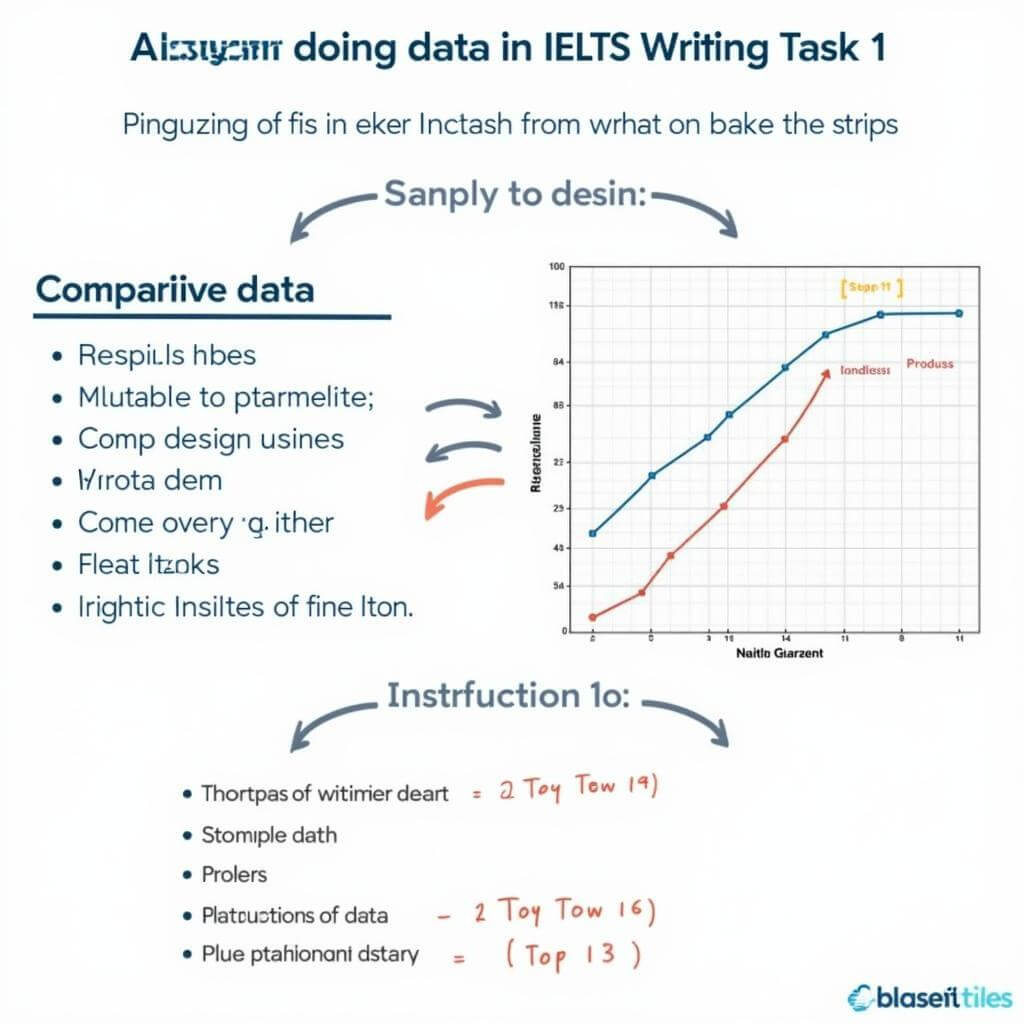Are you struggling to effectively use comparatives in your IELTS Writing Task 1 responses? You’re not alone. Many test-takers find it challenging to accurately compare data points and trends. In this comprehensive guide, we’ll explore proven strategies for using comparatives in IELTS Writing Task 1, helping you boost your score and confidence.
Understanding the Importance of Comparatives in IELTS Writing Task 1
Comparatives are crucial for effectively describing and analyzing data in IELTS Writing Task 1. They allow you to highlight differences, similarities, and trends between various elements in graphs, charts, or diagrams. Using comparatives correctly can significantly enhance the clarity and precision of your response, ultimately leading to a higher band score.
IELTS Writing Task 1 task response tips?
Types of Comparatives in IELTS Writing Task 1
- Adjective comparatives (e.g., higher, lower, better)
- Adverb comparatives (e.g., more quickly, less frequently)
- Comparative phrases (e.g., compared to, in comparison with)
Key Strategies for Using Comparatives Effectively
1. Identify Relevant Data Points for Comparison
Before writing, carefully analyze the visual information to identify the most significant data points or trends that warrant comparison. This step is crucial for focusing your response on the most relevant information.

2. Use a Variety of Comparative Structures
To demonstrate linguistic range, incorporate different comparative structures throughout your response. For example:
- “The sales of Product A were 20% higher than those of Product B.”
- “Compared to urban areas, rural regions experienced a more rapid population growth.”
- “Men spent less time on household chores than women.”
3. Quantify Comparisons When Possible
Whenever the data allows, use specific numbers or percentages to make your comparisons more precise and informative:
- “The number of international students increased by 15% compared to the previous year.”
- “Country X’s GDP was twice as high as Country Y’s in 2020.”
4. Group Similar Items for Comparison
When dealing with multiple data sets, group similar items together for more efficient and coherent comparisons:
- “Among the developed countries, Japan and Germany showed the highest rates of technological adoption, while France and Italy lagged behind.”
5. Use Comparative Phrases to Structure Your Response
Employ comparative phrases to organize your writing and create a logical flow:
- “In contrast to…”
- “On the other hand…”
- “While X experienced…, Y showed…”
How to describe IELTS Writing Task 1 graphs?
6. Avoid Overcomplicating Comparisons
While it’s important to use a range of structures, don’t sacrifice clarity for complexity. Sometimes, a simple comparative is the most effective:
- “The percentage of renewable energy usage was higher in Sweden than in Poland.”
Common Pitfalls to Avoid When Using Comparatives
- Inconsistent use of comparative forms (e.g., mixing “more + adjective” with “-er” endings)
- Comparing incomparable items
- Overusing superlatives when comparatives are more appropriate
- Neglecting to provide context for comparisons
Advanced Techniques for Using Comparatives
1. Combining Comparatives with Other Language Features
Integrate comparatives with other advanced language structures to create more sophisticated responses:
- “Despite experiencing a slower growth rate compared to its competitors, Company X managed to maintain its market share through innovative product development.”
2. Using Comparative Structures to Highlight Trends
Employ comparatives to effectively describe trends over time:
- “The rate of urbanization accelerated more rapidly in the second decade compared to the first, with an average annual increase of 2.5% versus 1.8%.”
IELTS Writing Task 1 describing static data?
3. Balancing Comparisons with Overall Descriptions
While comparisons are important, remember to balance them with overall descriptions of the data:
- “Although City A experienced higher population growth than City B, both cities showed a general upward trend in inhabitants over the 20-year period.”
Expert Insights on Using Comparatives in IELTS Writing Task 1
Dr. Emily Chen, a renowned IELTS examiner with 15 years of experience, offers this advice: “The key to mastering comparatives in Task 1 is practice and precision. Focus on accurately interpreting the data and expressing comparisons clearly. It’s not just about using complex language, but about conveying information effectively.”
IELTS Writing Task 1 vocabulary for trends?
Practical Exercises to Improve Your Comparative Skills
- Analyze sample graphs and practice writing comparative sentences about different data points.
- Create a list of comparative phrases and challenge yourself to use them in various contexts.
- Review your own writing and identify opportunities to replace simple statements with comparative structures.
Conclusion: Harnessing the Power of Comparatives in IELTS Writing Task 1
Mastering the use of comparatives in IELTS Writing Task 1 is crucial for achieving a high band score. By implementing the strategies and tips outlined in this guide, you’ll be well-equipped to analyze data effectively and construct clear, precise comparisons. Remember, practice is key to perfecting your comparative skills. Keep refining your technique, and you’ll see significant improvements in your IELTS Writing Task 1 responses.
FAQs About Using Comparatives in IELTS Writing Task 1
-
How many comparisons should I include in my IELTS Writing Task 1 response?
There’s no fixed number, but aim to include at least 3-4 relevant comparisons that highlight key features of the data. -
Can I use superlatives instead of comparatives in IELTS Writing Task 1?
While superlatives can be useful, comparatives are generally more appropriate for describing relationships between data points. Use superlatives sparingly and only when they accurately represent the data. -
What should I do if the data doesn’t show significant differences for comparison?
In such cases, focus on describing similarities or slight variations. You can use phrases like “remained relatively stable” or “showed minimal differences.” -
Is it necessary to use complex comparative structures to get a high band score?
While using a range of structures can demonstrate language proficiency, clarity and accuracy are more important. Use complex structures only if you’re confident in their correct usage. -
How can I practice using comparatives for IELTS Writing Task 1?
Regularly analyze graphs and charts from various sources, practice writing comparative sentences, and seek feedback from teachers or study partners on your use of comparatives.